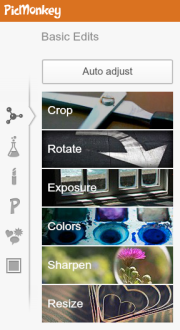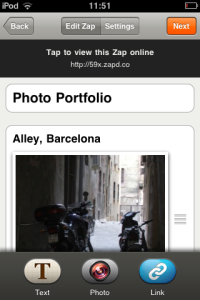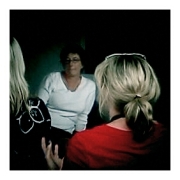A bibliography of useful books, articles and online resources
Australian Flexible Learning Framework. Effective Online Facilitation. Downloaded 5 January 2010 from http://pre2005.flexiblelearning.net.au/guides/facilitation.html
Australian Flexible Learning Framework. What are the conditions for and characteristics of effective online learning communities? Downloaded 5 January 2010 from http://pre2005.flexiblelearning.net.au/guides/community.pdf
Brook, C Oliver, R (2003). Online learning communities: Investigating a design framework. Downloaded 4 April 2010 from http://www.ascilite.org.au/ajet/ajet19/brook.html
Cann, A et al (2010). Google Wave in Education. Downloaded 2 march 2010 from http://newsletter.alt.ac.uk/1civo6vnixg
Carr T, Jaffer S, Smuts J. Facilitating Online: A course leader’s guide. Downloaded from 6 February 2010 http://www.cet.uct.ac.za/files/file/Facilitating_online.pdf
Chatti M A. LaaN vs. Situated Learning. Downloaded 18 February 2010 from http://mohamedaminechatti.blogspot.com/2010/02/laan-vs-situated-learning.html
Chromatic. Building Online Communities. Downloaded 5 January 2010 from http://www.oreillynet.com/pub/a/network/2002/10/21/community.html
Clark, RC, Mayer RE (2003). E-learning and the Science of Instruction. Wiley & Sons.
Downes, S (2007). Learning networks in practice. Downloaded 25 February 2011 from http://www.downes.ca/files/Learning_Networks_In_Practice.pdf
Garrison, D., & Anderson, T. (2002). E-Learning in the 21st Century: A Framework for Research and Practice. Routledge Falmer.
Green, P (2010). How to create a live online learning event. Downloaded 2 March 2010 from http://newsletter.alt.ac.uk/ovsn7pmtanz
Left, P (2010). 8 tips for online learning community activities. Downloaded 20 June 2010 from http://www.verso.co.nz/learning-communities/832/8tips-for-online-learning-community-activities/
Left, P (2010). Evaluating online community activities. Downloaded 20 June 2010 from http://www.verso.co.nz/learning-communities/780/evaluating-online-community-activities/
Left, P (2010). Planning online learning activities: problems with technology. Downloaded 20 June 2010 from http://www.verso.co.nz/learning-communities/735/planning-online-learning-activities-problems-with-technology/
McKeachie, W. J. (2002). McKeachie’s Teaching Tips: Strategies, Research, and Theory for College and University Teachers. Houghton Mifflin Co.
McPherson, M., & Nunes, M. B. (2004). Developing Innovation in Online Learning: An Action Research Framework (Open & Flexible Learning S.). Routledge Falmer.
Nussbaum-Beach, S. The Art of Building Virtual Communities. Downloaded 5 January 2010 from http://21stcenturylearning.typepad.com/blog/2007/08/the-art-of-buil.html
Palloff, R. M. (2003). The Virtual Student: A Guide to Understanding and Working with Online Learners. Jossey Bass Wiley.
Palloff, R. M., & Pratt, K. (2004). Collaborating Online: Learning Together in Community. Jossey Bass Wiley.
Palloff, R M & Pratt, K. Beyond Facilitation. Downloaded 5 January 2010 from http://xroadservices.com/home/download/webenhancedmoda.ppt
Siemens G. Learning Ecology, Communities, and Networks: Extending the classroom. Downloaded 5 January 2010 from http://www.elearnspace.org/Articles/learning_communities.htm
Wenger, E., McDermott, R. A., & Snyder, W. (2002). Cultivating Communities of Practice: A Guide to Managing Knowledge. Harvard Business School Press.
Wenger, E. Communities of practice: a brief introduction. Downloaded 5 January 2010 from http://www.ewenger.com/theory/index.htm
Wenger, E. Communities of Practice: Learning as a social system. Downloaded 5 January 2010 from http://www.co-i-l.com/coil/knowledge-garden/cop/lss.shtml
Wenger, E. and Trayner, B. Frequently Asked Questions. Downloaded 5 February 2012 from http://wenger-trayner.com/map-of-resources/
White N. How Some Folks Have Tried to Describe Community. Downloaded 5 January 2010 from http://www.fullcirc.com/community/definingcommunity.htm
White N. Communities, networks and what sits in between. Downloaded 5 January 2010 from http://www.fullcirc.com/wp/2009/08/06/communities-networks-and-what-sits-in-between/
 When I deliver professional development activities with teachers, I often need to point them to easy and effective online tools for working with media. Typically, they need to learn how to optimise images for the web (eg cropping and sizing), do some simple tweaks to correct exposure problems, or add some simple labels to images. Most don’t have the budget or inclination to commit to ‘proper’ image editing software such as Photoshop or Gimp.
When I deliver professional development activities with teachers, I often need to point them to easy and effective online tools for working with media. Typically, they need to learn how to optimise images for the web (eg cropping and sizing), do some simple tweaks to correct exposure problems, or add some simple labels to images. Most don’t have the budget or inclination to commit to ‘proper’ image editing software such as Photoshop or Gimp.
 Unitec’s Diana Ayling (pictured) spoke at an Elearning Community workshop about an online community she’s involved with which focuses on teaching and learning. These are my brief reflections on her presentation.
Unitec’s Diana Ayling (pictured) spoke at an Elearning Community workshop about an online community she’s involved with which focuses on teaching and learning. These are my brief reflections on her presentation. One thing I really like about my Android phone (LG P500) is the camera feature. It’ll never replace my real camera but it’s always with me, so I can take a quick snap even when I’m teaching. Plus there are imaging apps which make it a great tool for fast and easy creation of images.
One thing I really like about my Android phone (LG P500) is the camera feature. It’ll never replace my real camera but it’s always with me, so I can take a quick snap even when I’m teaching. Plus there are imaging apps which make it a great tool for fast and easy creation of images. When the iPad was first announced I posted some brief thoughts about its
When the iPad was first announced I posted some brief thoughts about its  I often hear from educators and others wanting to set up a simple, small-scale e-learning platform to support their activities. While such a site has the potential to be more flexible and adaptable than a large institutional setup, it’s important to start it off on a sound footing to avoid wasting time and money.
I often hear from educators and others wanting to set up a simple, small-scale e-learning platform to support their activities. While such a site has the potential to be more flexible and adaptable than a large institutional setup, it’s important to start it off on a sound footing to avoid wasting time and money. In a purely social community, collaboration and communication can be very open and unstructured. But when incorporating online community approaches into courses, we normally need to adopt a more structured approach to meet needs of the curriculum and the learners.
In a purely social community, collaboration and communication can be very open and unstructured. But when incorporating online community approaches into courses, we normally need to adopt a more structured approach to meet needs of the curriculum and the learners.

